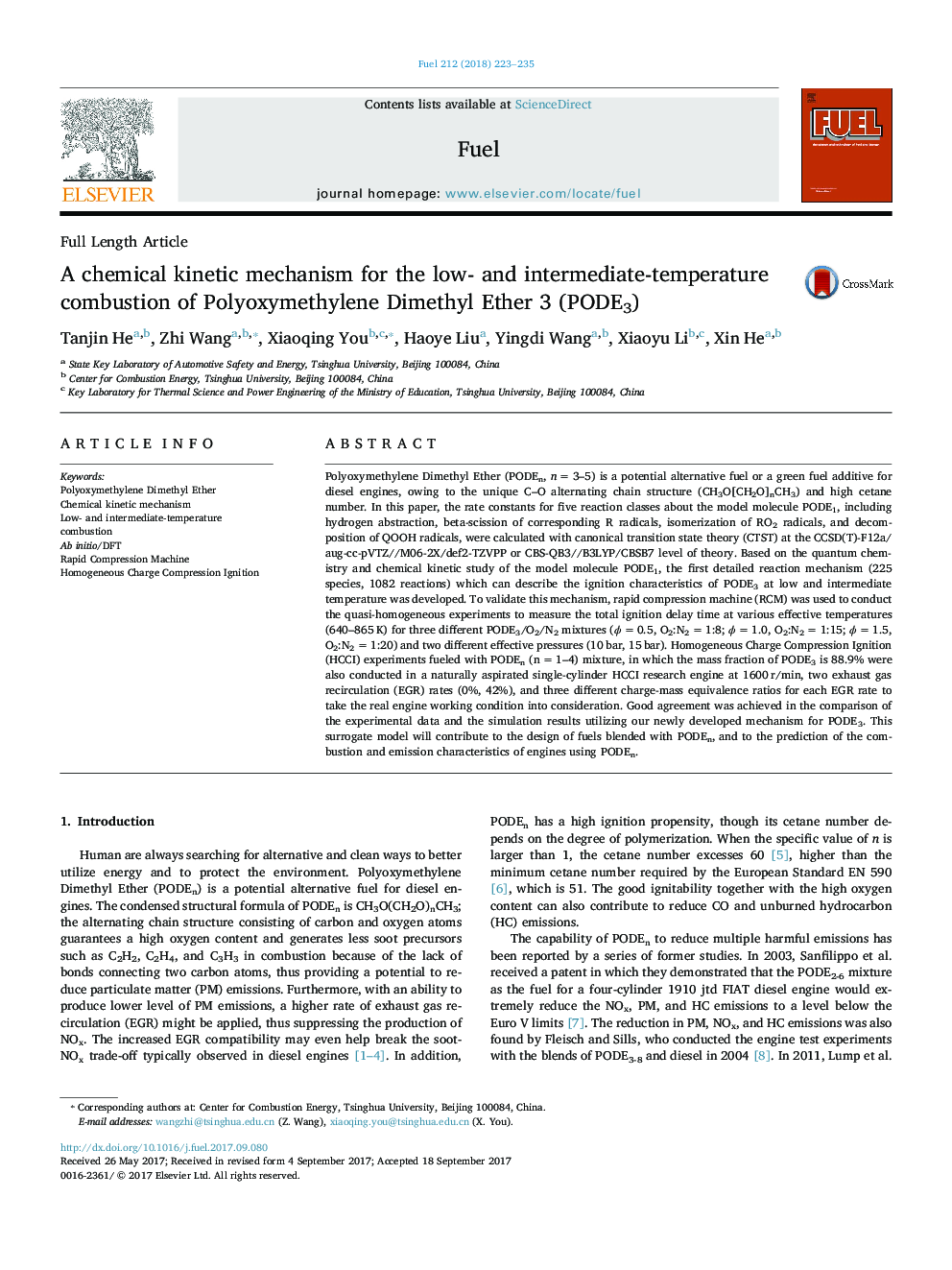| کد مقاله | کد نشریه | سال انتشار | مقاله انگلیسی | نسخه تمام متن |
|---|---|---|---|---|
| 4768271 | 1424952 | 2018 | 13 صفحه PDF | دانلود رایگان |
عنوان انگلیسی مقاله ISI
A chemical kinetic mechanism for the low- and intermediate-temperature combustion of Polyoxymethylene Dimethyl Ether 3 (PODE3)
دانلود مقاله + سفارش ترجمه
دانلود مقاله ISI انگلیسی
رایگان برای ایرانیان
کلمات کلیدی
موضوعات مرتبط
مهندسی و علوم پایه
مهندسی شیمی
مهندسی شیمی (عمومی)
پیش نمایش صفحه اول مقاله

چکیده انگلیسی
Polyoxymethylene Dimethyl Ether (PODEn, nâ¯=â¯3-5) is a potential alternative fuel or a green fuel additive for diesel engines, owing to the unique C-O alternating chain structure (CH3O[CH2O]nCH3) and high cetane number. In this paper, the rate constants for five reaction classes about the model molecule PODE1, including hydrogen abstraction, beta-scission of corresponding R radicals, isomerization of RO2 radicals, and decomposition of QOOH radicals, were calculated with canonical transition state theory (CTST) at the CCSD(T)-F12a/aug-cc-pVTZ//M06-2X/def2-TZVPP or CBS-QB3//B3LYP/CBSB7 level of theory. Based on the quantum chemistry and chemical kinetic study of the model molecule PODE1, the first detailed reaction mechanism (225 species, 1082 reactions) which can describe the ignition characteristics of PODE3 at low and intermediate temperature was developed. To validate this mechanism, rapid compression machine (RCM) was used to conduct the quasi-homogeneous experiments to measure the total ignition delay time at various effective temperatures (640-865â¯K) for three different PODE3/O2/N2 mixtures (Ïâ¯=â¯0.5, O2:N2â¯=â¯1:8; Ïâ¯=â¯1.0, O2:N2â¯=â¯1:15; Ïâ¯=â¯1.5, O2:N2â¯=â¯1:20) and two different effective pressures (10â¯bar, 15â¯bar). Homogeneous Charge Compression Ignition (HCCI) experiments fueled with PODEn (nâ¯=â¯1-4) mixture, in which the mass fraction of PODE3 is 88.9% were also conducted in a naturally aspirated single-cylinder HCCI research engine at 1600â¯r/min, two exhaust gas recirculation (EGR) rates (0%, 42%), and three different charge-mass equivalence ratios for each EGR rate to take the real engine working condition into consideration. Good agreement was achieved in the comparison of the experimental data and the simulation results utilizing our newly developed mechanism for PODE3. This surrogate model will contribute to the design of fuels blended with PODEn, and to the prediction of the combustion and emission characteristics of engines using PODEn.
ناشر
Database: Elsevier - ScienceDirect (ساینس دایرکت)
Journal: Fuel - Volume 212, 15 January 2018, Pages 223-235
Journal: Fuel - Volume 212, 15 January 2018, Pages 223-235
نویسندگان
Tanjin He, Zhi Wang, Xiaoqing You, Haoye Liu, Yingdi Wang, Xiaoyu Li, Xin He,